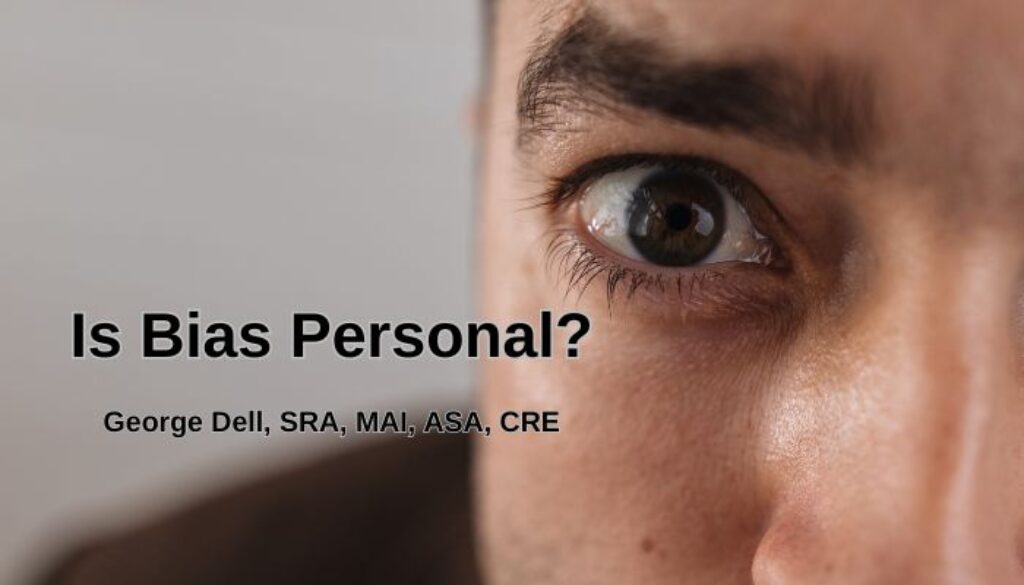The word bias brings up personal feelings in almost everyone. Even anger. Even a desire to strike back. Grrrr.
This makes sense. Bias, and concepts of bias are personal. It’s about me. Or about THEM! Those people! They should just see things my way . . .
The more writing I do, the more I learn that often, too often the problem, the disagreement and even wars start partly by failure to understand the meaning of word. As I now move into our 7th year of writing this “analogue blog” – almost always it starts with a word definition.
The solution: in every case, if each person, with each personal position, would simply define what the word means. What the word ‘bias’ means to them – half the disagreement would go away. And the other half could be meaningful.
Often the solution does not mean changing my mind. Nor making the other person see things my way. The solution can be based on common goals. Most of us really want a solution. Most of us actually have common goals: truth, justice, and the “American way” (whatever that means for non-supermen)!
No one is really against fairness. No one openly prefers injustice. There may be exceptions: mentally unstable, self-centered, psychopathic, and compulsive cheats who only have self as a goal.
We are shaped by what we are taught. Influenced by what is ok to those around us and those who agree with us. And encouraged by social websites that present a pre-selected echo-chamber of what we (may) already believe to capture and reinforce our opinion.
Is the appraiser biased? Is the appraisal process biased?
Today’s official appraisal process is biased toward “recognized methods and techniques.” The “recognized” part runs deep in this world. It is rooted in standards, practice, education, licensing, user expectations, and regulations.
Stagnancy is reflected in real property Appraisal Standard 1. In over five years, there has been only one word changed in this standard, which sets the development of an appraisal. One. This development standard is substantially the same since its inception over 35 years ago.
The standard itself does not create racial/minority bias (in my opinion), however, it endorses a method which has predominated since long before the 1989 version of USPAP. The method is that an appraiser (presumably defined as being “objective”) picks comparable sales.
One problem: using judgment (even very good judgment) is not market-data-derived. The market speaks through whatever data we can glean about buyer/seller behavior.
In fact, any system which does not optimize the competitive sales is not the most reliable. Judgment selection is suspect. The use of less than all relevant and available data is conclusionary – it’s analytically biased!
It may or may not be racially biased. But it is analytically biased. Too high, too low. Bias can go either way.
Another dilemma is that legacy appraisal standards, practices, and education, and the 54 regulatory (state) bodies who interpret the standards – are obsolete.
The Five Frictions to appraisal modernization: the process, the standards, the education, the regulatory laws, and user expectations, all enable personal bias. That’s the problem. The solution is simple: apply and require modern data science principles, using complete, optimized data, not a judgment sample, in the appraisal process.

July 24, 2024 @ 2:13 am
The appraisal is an opinion of value, this concept of opinion results in bias since the appraiser has a plethora of data that can be considered and applied. Appraiser mental capacities are not the same – some better some worse analytically – some simply some smarter some dumber – some willing to investigate more some less – some can express in writing better – some worse. AI will eventually takeover, but it will take humans to set the parameters analytically and standards by which we analyze, or it will be chaos. Numbers don’t lie, but how to use numbers and interpret them and what they mean is ripe for bias. I always have said to my clients, this is MY opinion based on my observations, analyses and conclusions – challenge me (with your bias) and may we can come to a mutual conclusion or find someone that may meet your needs (bias). Bias works both ways.
July 24, 2024 @ 5:08 am
Now let’s pass this along to lenders, AMC’s and buyers/homeowners who are given the power to force ROV’s on Appraisers. Talk about “picking your own comps” they do it all around HIGHER sales to make their deals work! This is BIAS in its highest form and has to STOP….let’s talk about that! OUR INDUSTRY HAS BEEEN TAIL WAGGING THE DOG FOR DECADES. IT HAS TO STOP NOW!
July 24, 2024 @ 3:35 pm
”WE MEASURE MARKETS, NOT COMPARE COMPS.“
That is the common sense of real estate appraisal practice.